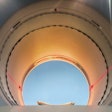Radiology groups are losing hospital contracts in record numbers as imaging services have become increasingly commoditized. And it doesn't help that more and more hospitals are disrupting existing relationships with physician groups in an effort to get more services for less money.
 |
| Healthcare business and legal affairs expert Mark F. Weiss. |
However, instead of using the RFP in its more traditional form of soliciting service for a one-time project, hospitals are using it as a "club to beat down its current service provider's expectations" -- or to replace the provider entirely, Weiss said in a webinar on the topic he conducted on March 1.
What kind of RFP is it?
Not every RFP is the same, Weiss said. He described three kinds -- a true RFP, a fictitious RFP, and a fulcrum RFP -- and encouraged radiology groups to discern what kind they're dealing with to better plan their response strategy.
"No matter what type of RFP, all come prepackaged with significant defects," Weiss said.
A "true" RFP is an actual search for the best quality provider, and it is closest to the traditional form used by industry or the government. Hospitals issue a true RFP if a former provider group has disintegrated or has lost the hospital's trust, or if the hospital is a new facility that is seeking service coverage. But even a "real" RFP isn't necessarily effective, according to Weiss.
"Even if the RFP is real, it's a lazy way for a hospital to select a provider of healthcare services," he said. "Looking at some pro forma financials tells very little about what's truly important to providing good patient care."
What's a fictitious RFP? A prop, Weiss said.
"In a fictitious RFP, the hospital has already decided who will receive the contract, but it issues a phony RFP to demonstrate fairness," he said.
Finally, the "fulcrum" RFP is what Weiss calls a "weaponized" request. It's designed to create leverage with existing groups: Although the hospital probably intends on renewing the group, issuing an RFP is a tool to dictate new contract terms.
Winner's curse
An RFP is like a sealed bid auction, except that instead of the highest price winning the item, the entity that offers the lowest price is the winner. But is this truly winning? Not necessarily, Weiss said. There's a gap between the promise of the contract and the delivery that can badly affect all parties involved.
"The major defect lurking here [in the RFP process] is the high potential for 'winner's curse' -- the winner turns out to be a big loser with underbid stipend support and overpromised service," he said. "RFPs favor the buyer, that is, the hospital, and the more bidders there are, the more likely it is that the contract winner will be the group that has underestimated costs."
Some hospitals are simply looking for the cheapest contact, Weiss said. Avoid these like the plague.
"These are the bottom feeders, and they don't deserve you," he said.
How to avoid an RFP
So how can hospital-based radiology groups avoid an RFP? Start by creating an "experience monopoly," Weiss said. And this means groups need to go beyond the current standards of best practices.
"I'm consistently amazed when I speak with potential new client groups and ask them, 'What sets your group apart?' So often they reply that they're board-certified, benchmarked to best practices. But that's not enough anymore," Weiss said. "In order to achieve a better future, your group can't do what every other group does, even if it's the best. You want to provide such a high level of service to a hospital's patients, medical staff, and referring physicians that the facility would lose too much if it dropped your contract."
Radiology groups should also create an interlocking system of protections within the group itself: Competition doesn't only come from the outside. And the time to do this is now, Weiss said, not when you're faced with an RFP.
"Most groups would say that 'protecting from competitors' means looking outward at other groups in the local area," he said. "But even if a group is doing all it can to create an experience monopoly, they can still be unprotected from another competitor: someone already on the inside, already on the team. Most groups don't fail because of outside competition, but because members from inside join with outside competitors or approach the hospital themselves."
Weiss also encourages hospital-based radiology groups to approach hospital administration early enough before contract renewal time to be able to strategize based on the hospital's response.
"A hospital's early response to the question of whether a contract will be renewed could be 'yes, no, or maybe,' " Weiss said. "It's important that you don't signal neediness around the renewal, but bring it up early enough to gauge the hospital's response. The more time you have to consider how to deal with [a potential] RFP, the more time you have to strategize."
How will you respond?
If a radiology group receives an RFP and chooses to respond, there are a number of key things to keep in mind, according to Weiss:
- Decide whether you will charge the hospital a fee to participate in the RFP.
- Take steps to determine what kind of RFP you're dealing with.
- Develop intelligence on your hospital's administration (how has the administration dealt with contracting before?) and on likely competitors.
- Protect against "miniattacks" on your group's competence.
- Shore up your group's solidarity: If a group can keep its members loyal, it will increase the odds of coming out of the RFP with a contract.
- Protect the group's data, especially internal cost structures and gross income; make it clear that data will not be provided to the hospital except via a third-party consultant, under terms of a confidentiality agreement.
- Develop referring physician support and be able to demonstrate it; it's one thing for a surgeon to tell the hospital CEO in the hall that he supports your group, but it's another to include a video of his vote of support as part of your RFP package.
- Add a margin of error to offset "winner's curse."
In any case, think of the RFP as just the beginning of a longer process, rather than as fait accompli, Weiss said.
"Treat the RFP as an invitation to a conversation between your group and the hospital's senior administrators," he said. "The RFP is the opening round of discussion that will become face-to-face."




















